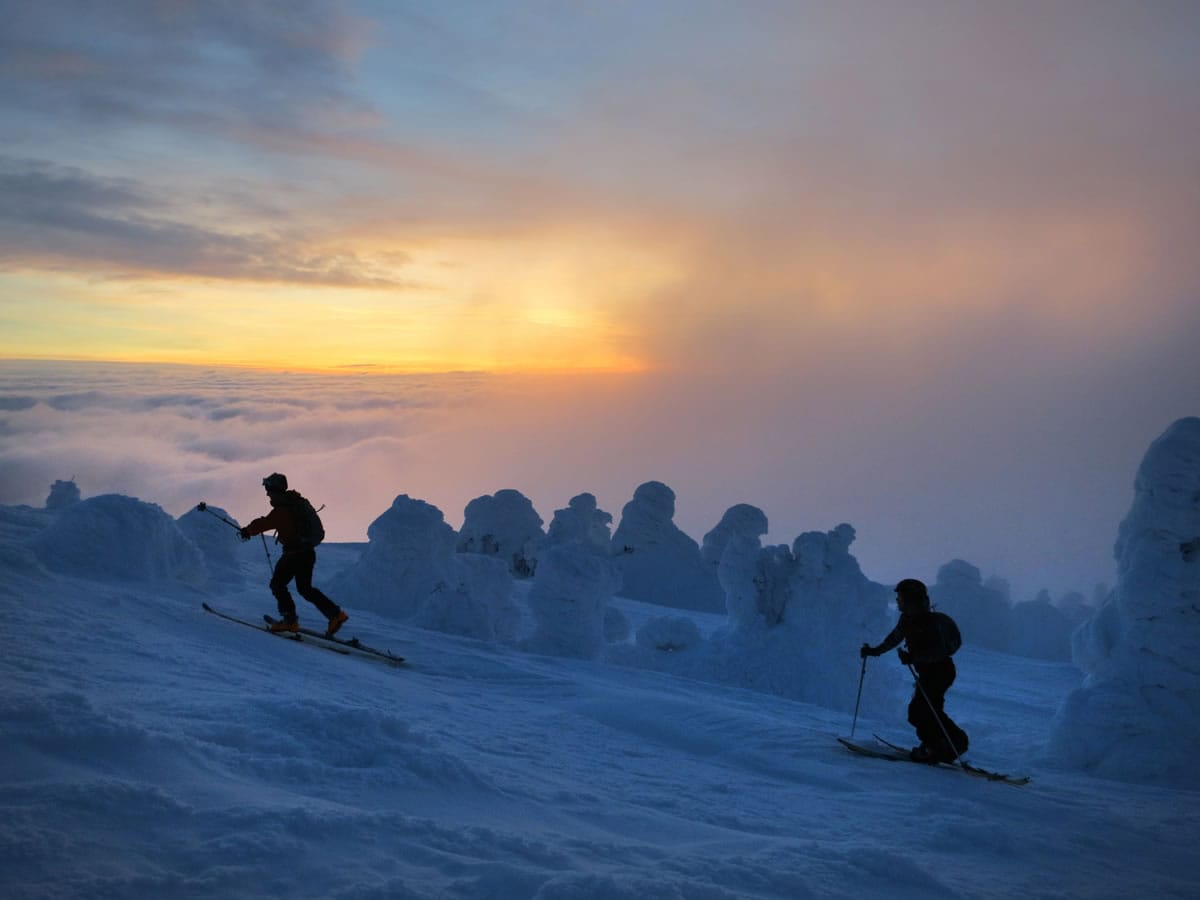SPOKANE — Ski areas across the USA are in an uphill battle to get a grip on the growing number of skiers and snowshoers who use the resorts’ plowed roads, facilities and groomed slopes without chipping in on the costs by purchasing a lift ticket.
Mount Spokane Ski and Snowboard Park is going through a public comment process to draw up rules and perhaps set fees for uphill travel within the downhill skiing concession area it leases from Mount Spokane State Park.
“Mostly it’s a safety issue,” said Brad McQuarrie, the ski area’s general manager. “But there are lots of thoughts on how to deal with it.”
Since posting “no uphill travel” signs at the Mount Spokane ski area last year, McQuarrie said the resort has been working with backcountry skiers and the Mount Spokane State Park Advisory Committee “to flesh out details.”
Ski resorts across the West have dealt with snowshoers and especially with skiers who put climbing skins on skis with AT or other free-heel bindings to climb and descend the groomed slopes. For example:
• Sun Valley Resort’s dramatic increase in uphill trekking on Old Baldy forced a policy change this season that bans uphill skiers during operating hours, 9 a.m.-4 p.m.
• Montana’s Big Sky and Bridger Bowl resorts prohibit uphill travel in the ski areas.
• Whitefish Mountain Resort in Montana has designated two routes uphill skiers may use to access powder runs under their own power. A U.S. Forest Service official warned skiers this season to stick to those routes to avoid additional rules.
• The Forest Service proposed a rule change this winter that would allow ski areas that lease lands from the federal agency to charge a fee for the uphill skiers. The issue came to a head at eastern resorts two years ago during low snow conditions that prompted uphill adventurers to vie for the same ribbons of man-made snow where resorts’ paying customers were descending.
• Some Colorado ski resorts require uphillers to get a lift ticket. Others restrict times and routes. Arapahoe Basin and Copper Mountain require uphillers to acquire a free hiking pass and sign a waiver. Steamboat asks uphillers to check in with the ski patrol for an update on conditions after which they’re given an all-day uphill-skiing armband pass for free. Breckenridge no longer allows uphill traffic while the lifts are running.
• Inland Northwest ski areas generally have flexible policies on uphill skiing, but Schweitzer has a “no uphill travel” policy at all times within the resort’s boundaries.
A recent assessment by the U.S. Ski Mountaineering Association on resort uphill policies indicates numerous states with this patchwork of approaches, many of which are spelled out deep in websites, if at all. The most common regulations allow skinning only before and after lifts close.
Rich Burkley, Aspen Skiing Co. vice president of mountain operations, said their four resorts have had policies in place for roughly 20 years because “uphilling” has been so popular at Aspen and Snowmass.
Burkley told the Associated Press that the growth in the number of people skinning or snowshoeing up has grown “exponentially” in recent years. The morning of Nov. 16, before the lifts were fired up for the first time this season on Aspen Mountain, he said he saw 46 people heading uphill before he quit counting.
Travis Nichols, a product buyer for Mountain Gear, says the Spokane-based outdoor equipment retailer has recognized the boom in sales of AT ski gear and snowshoes.
“That’s why I’ve become involved with Mount Spokane as they work to develop rules,” he said.
Nichols said the biggest growth in snow sports is in the backcountry and especially in what he calls the “slack country, free-ride skiers.”
“These people are looking for new experiences and good skiing with an emphasis on getting their heart rate up,” he said. “A lot of them don’t want to worry about avalanche, route-finding and breaking trail. Many of them are looking for a quick workout and a good run in a controlled environment before or after they go to work.”
AT ski gear, with bindings that lock heels down like alpine bindings for descents, has become so advanced that a growing number of fitness-fanatic skiers are using them at some resorts all day long, using muscle power to climb back up the slopes after every run, Nichols said.
“These are alpine skiers looking for a new experience,” he said. “They want to ski downhill fast and aggressively, but get up on their own.”
Nichols sees these skiers as a growing market for outdoor equipment retailers as well as for ski resorts such as Mount Spokane.
“If these skiers are encouraged to use the downhill ski area, they’ll end up making their last run down to their vehicle parked near the lodge and spend money. This is a beer-drinking, burger-eating group of people.”
The Vista House food concession at the top of Chair 1 already is a popular destination for uphill skiers and snowshoers trekking on the mountain.
However, some uphill travelers at ski resorts are looking for an expedited route to a backcountry experience. Resorts want some control over that experience if they’re using ski area infrastructure.
“At Mount Spokane, backcountry skiers and snowshoers have tons of access points without coming into the downhill area, but other resorts may not have those safe options,” McQuarrie said.
Complicating the choices for uphill skiers is the huge growth in snowshoeing on Mount Spokane.
“The snowmobile parking lot has become the snowshoe lot,” McQuarrie said. “Backcountry skiers heading up from that lot outside the ski area are finding snowshoeing tracks all over the place.”
Nichols said he used to ski up and down state park Trail 130 from the snowmobile parking lot but looked for other routes as the trail became more congested with snowshoers.
The resort is leaning toward opening a groomed route for uphill ski travel but only during certain times.



